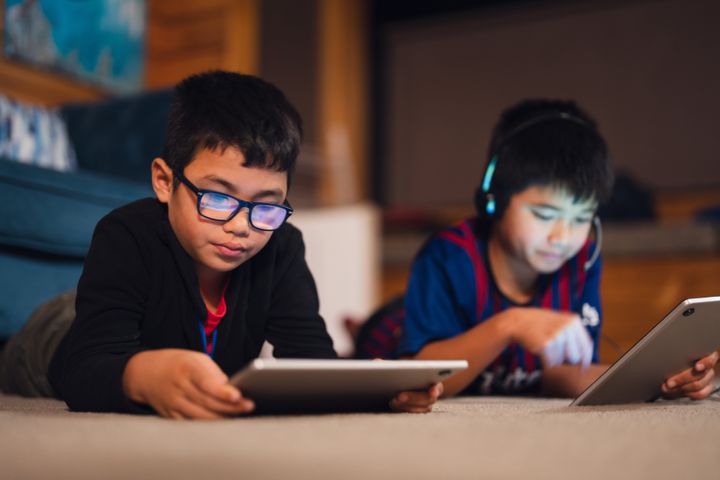
Screen time differs for each family with some parents adamant their kids will be screen free, and others who are more lenient about it.
There’s often a debate about ‘iPad kids’ — children who watch and play with tablets and portable screens on a regular basis. Some parents frown upon this and others feel it’s fine if it means they can eat in peace.
But the question is, do all screens have the same impact? Well, according to experts there are ways to reduce the negative impact without taking away screens completely.
‘iPad can become quickly addictive’
Counsellor, Georgia Sturmer says it’s easy to be tempted by the endless array of entertainment that’s available on an iPad which might not be the best for kids.
“iPad’s have a limitless selection of things to watch and games to play, in comparison with live TV. But when we are offering our children a limitless array of entertainment that they can passively absorb, there is a risk involved too.
“When there’s always something to do or watch on an iPad, it can quickly become an addictive way to spend time. This can make it harder for children to engage with the world around them, and to want to step away from it.”
Dr Charlotte Armitage, psychologist, psychotherapist and founder of No Phones at Home Day says in her professional opinion, live TV is the least of our worries for parents of this generation.
Although there were once concerns over the psychological and physiological impact of children being exposed to live TV, the risks of consuming media have now increased significantly with the invasion of devices into our lives, she explains.
‘With TV, parents have more control’
“Compared to a TV, we have far less control over devices and over the content that is on them, when you combine this with the accessibility and portability of these devices, as opposed to a TV which is static on a wall, it creates a huge problem.
“In addition, the content on devices is of a different format, often short form rather than long form content, even apps which are designed for children can be problematic. These apps and short form videos are designed to encourage engagement and to keep the user glued to the screen, they do this by feeding the user content that they believe that the user wants and they do this rapidly to keep attention.” says Dr Armitage.
In neuroscience terms, this engagement is held and rewarded by the release of dopamine in the brain, it is essentially wiring the brains of young children to expect regular rewards, it in essence becomes addictive, she says.
As a child grows, Dr Armitage explains: “At the moment those rewards might well be scrolling through to the next video but as the child matures they may be more inclined to seek out activities or substances that facilitate the release of dopamine in the brain, which may be far more harmful than a device.”
She adds that with TV there is control over the content that is played to the child and even with live TV it’s unlikely that you’d let a child watch a live TV show that is designed for adults, the parent still has control over what is viewed on the TV.
However she concludes that screen time of any kind can impact interpersonal interaction and activity levels, ideally screen time should be as limited as possible.